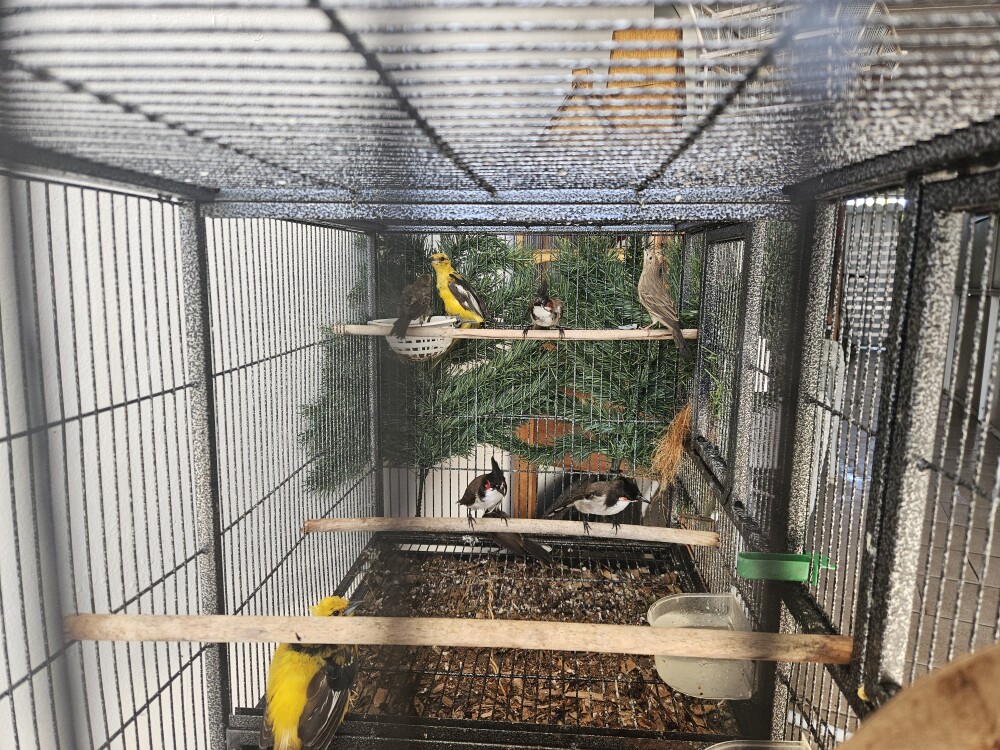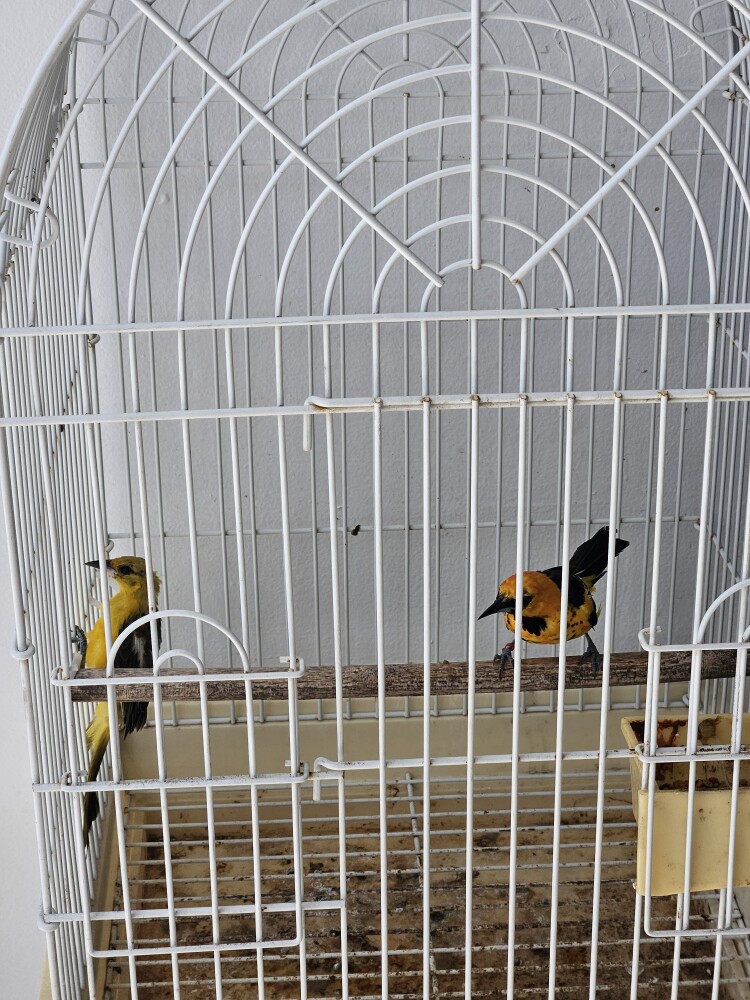Orioles for Sale
(Oriolidae)
Orioles first got their name from early American settlers because of the bird's popular black and yellow coloring resembling the Oriole birds of Europe. Orioles belong to the Oriolidae family which consists of about 30 different species. Males are typically black and yellow or orange, with some white plumage and females are much more plain. The bird is known to be shy and not easily spotted by humans. You can tell there is an Oriole around by its loud whistling song. They prefer to dwell in woodlands, gardens, and warm regions and typically eat insects, and fruit when it's available.

Altamira oriole
- Name: Gustavo
- Posted: 09/18/2025
- Phone: 7863516831
- Email: Email Seller
- Location: Florida
- Website: Celler
Altamira oriole for sale

Altanera orille for sale
- Name: Gustavo
- Posted: 08/04/2025
- Phone: 7863516831
- Email: Email Seller
- Location: Florida
- Website: Imail celler
Oriole for sale
Types of Orioles
- African Black-headed Oriole (Oriolus larvatus)
- Black-naped Oriole (Oriolus chinensis)
- Golden Oriole (Oriolus oriolus)
- Yellow Oriole (Oriolus flavocinctus)
Nesting
An Oriole's nest, like the Oriole itself, is a sight to see! Most Orioles choose a tall, deciduous tree and weave together plants, yarn, and string. Many Orioles look for tall deciduous trees, where they weave together plant fiber and sometimes yarn or string to make a large sac-like nest that hangs off the end of a branch to keep the bird family safe from climbing predators. This home sometimes takes a bird family as long as 12 days to construct.
American Orioles
Several species live in America, such as the Baltimore Oriole (precisely, like the team), Bullock's Oriole, Orchard Oriole, Scott's Oriole, and the Hooded Oriole. These species are spread out all over the United States, from East to West, but aren't enjoyed often because they typically spend winters in Mexico and Central and South America where they find stable food sources of insects and fruit. They migrate North again to nest in early Spring, but your chance to enjoy them doesn't last long because they migrate South again in August. Even when looking for them, you might only get a glimpse of their lives for a day, or summer if you're lucky. Avid bird watchers suggest these tips for attracting Orioles: provide them the same nectar you would a hummingbird and provide them orange flowers because they are attracted to the color. Get creative about where you'll hang your bird feeder. They'd enjoy a feeder that hangs nicely out in the open. They also love the sound and sight of running water, so provide them a feeder by a natural or man-made water source or birdbath.
Other Species of Orioles
Some examples of types of Orioles are the only European Oriole, the Golden Oriole that lives in Central Asia and India. It's yellow with dark eyes and black wings. It closely resembles the African Golden Oriole. The Maroon Oriole of the Himalayas has crimson coloring instead. All birds within the Oriole family are birds that perch, what bird experts call “Passerine”. Passerine birds make up more than half of all bird species.
Endangerment Status
Because there are so many species in the Oriolidae family, it's hard to report on their endangerment status. All over the world, Orioles are a favorite bird and measures are being taken to protect them. For instance, the beloved, aforementioned Baltimore Oriole has been affected by habitat loss like many birds, due to deforestation and man-made developments, but now they are protected by what's known as the Migratory Bird Treaty Act and is not listed as an endangered species. The once critically endangered Montserrat Oriole now has a stable population due to manmade efforts to save the bird from extinction after a series of volcano eruptions that destroyed two major forests. Now that volcanic activity is low and the forest is protected by the island's inhabitants, the Montserrat Oriole should experience a still fluctuating, but bright future in our world.

Comments